Country guides

Things to do in Egypt
Egypt is renowned for its incredible tourist attractions, which include ancient wonders, breath-taking natural beauty and a rich cultural heritage. Those who venture to the 'Land of the Pharaohs' will soon discover why it's one of the world's great destinations.
Cairo, the capital, houses the market place Khan el-Khalili, the Egyptian Museum, and the necropolis at the City of the Dead, while just outside stand the iconic pyramids of Giza and the Sphinx. To the north sits the port city of Alexandria, which was founded by none other than Alexander the Great. The city lies at the estuary of the Nile and was home to the Lighthouse of Alexandria, which was one of the Seven Wonders of the Ancient World. The lighthouse no longer exists but travellers can visit a fort that stands on its former site.
One of the best ways to experience Egypt is to take a boat cruise down the mighty Nile, perhaps visiting the city of Luxor along the way as it's situated on the river's banks. Built on the ancient site of Thebes, Luxor is the location of the Valley of Kings and the tombs of Tutankhamun, whose tomb was discovered almost intact and full of treasures in 1922, and Ramses II, who was one of the greatest pharaohs of Ancient Egypt. Further south, the serene Lake Nasser offers peace and quiet within dramatic desert landscapes. Visitors can take a multi-day cruise from Aswan to Abu Simbel, the site of the great temple of Ramses II.
The Red Sea is world-renowned for its scuba diving, and holidaymakers flock to resorts such as Hurghada for the warm waters and abundance of ocean life. In stark contrast are the arid plains of the Sahara, which feature the rocks of the White Desert, and the palms and olive trees of the Siwa Oasis.
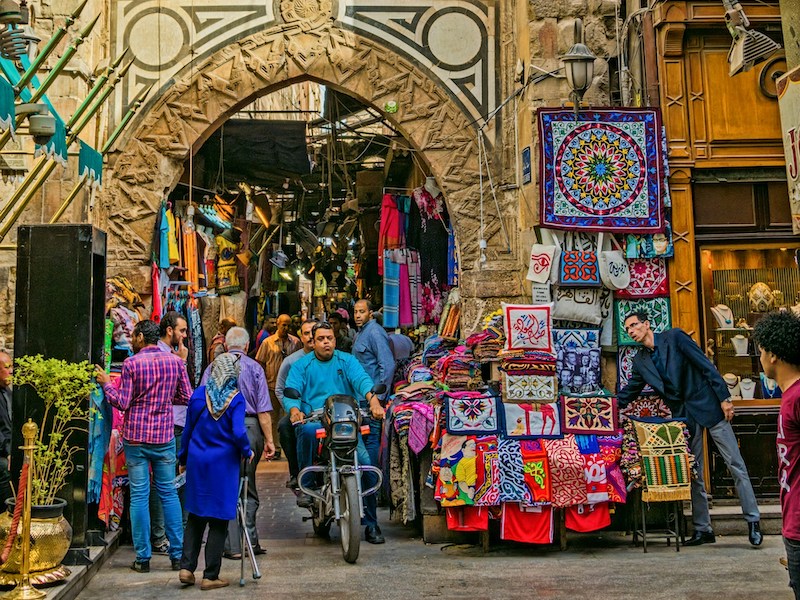
Khan al-Khalili
Buzzing with enthusiastic buying and selling, Khan al-Khalili is one of the largest markets in the world. Situated within Islamic Cairo, the World Heritage Site attracts travellers…
Khan al-Khalili
Buzzing with enthusiastic buying and selling, Khan al-Khalili is one of the largest markets in the world. Situated within Islamic Cairo, the World Heritage Site attracts travellers and locals alike. On the northern corner of the bazaar is the Mosque of Sayyidna al-Hussein, one of the holiest Islamic sites in Egypt. The market is the best place to soak up the colour of Cairo and to people-watch, and the streets themselves have charming arches, carvings and mosaics. Travellers will get many amazing photo opportunities wandering the labyrinthine little streets, though they must be wary of getting lost.
Traders have been bargaining in these alleys since the 14th century and it's possible to buy almost anything, from exotic perfume bottles to everyday Arabic clothing. There is, of course, a lot of junk as well but treasures and great bargains can be found. Visitors should be prepared to barter as the prices originally stated will always be much too high and the merchants expect them to negotiate. Although some of the traders are delightful others can get pushy and rude. Unfortunately, women travelling alone will almost certainly have to put up with a certain amount of harassment. No matter how many times travellers visit this vibrant market, they will always find something new and enchanting.
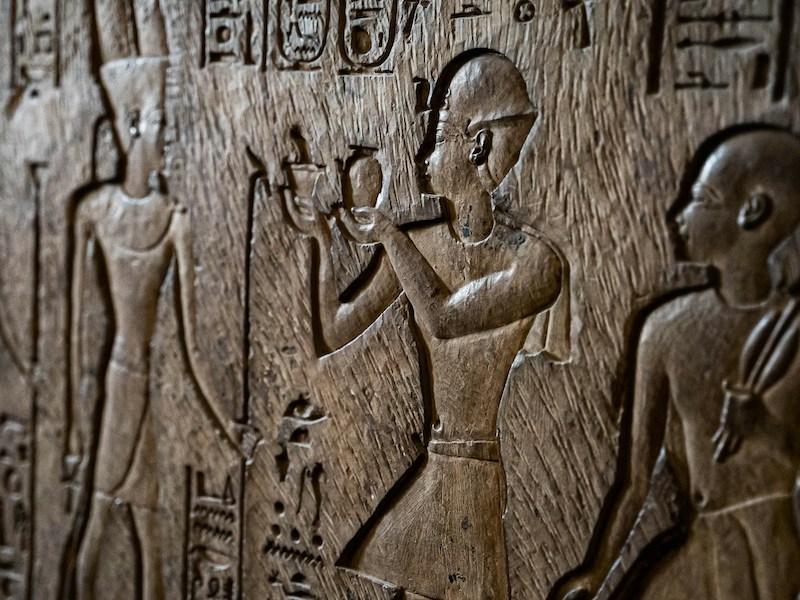
Egyptian Museum of Antiquities
With over 100,000 artefacts in 107 halls, the Egyptian Museum provides days of exploration. Inside, visitors will find treasures from ancient Egypt that include priceless finery ta…
Egyptian Museum of Antiquities
With over 100,000 artefacts in 107 halls, the Egyptian Museum provides days of exploration. Inside, visitors will find treasures from ancient Egypt that include priceless finery taken from ancient royal tombs, as well as the statue of Khafre (Chephren), which is one of the museum's masterpieces.
The most popular attraction is the Tutankhamun Gallery, where exquisite treasures from the tomb of the iconic Boy King are displayed, including the famous solid gold death mask. Another top attraction is the Royal Mummy Room containing mummies of some of the most powerful Pharaohs in Egypt dating from the 18th to 20th dynasties. There's an additional cost for this room.
The museum also contains collections of artefacts such as coins, papyrus scrolls, scarabs and sarcophagi. There's a cafeteria, bank, post office, gift shop and library at the museum, and taped audio guides are available in English, French and Arabic. Visitors should be aware that photography is not allowed.
Although a trip to Egypt would feel incomplete without a visit to this incredible museum, its location on Tahrir Square means that foreigners must be cautious visiting during periods of unrest. If there are demonstrations on the square it's best to avoid the area.
Website momaa.org/directory/museum-of-egyptian-antiquities/
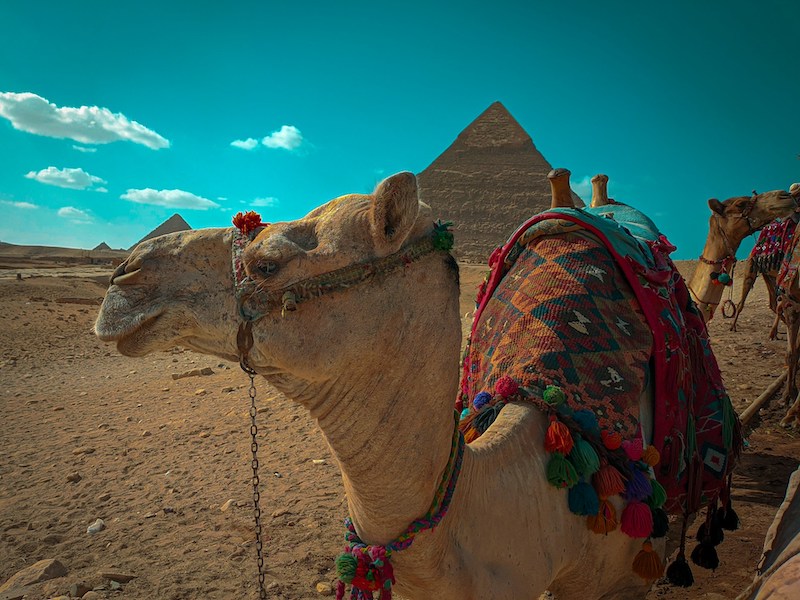
Pyramids of Giza
The pyramids are the earth's oldest tourist attraction and the Great Pyramid of Khufu (also referred to as the Great Pyramid of Cheops) is the only remainder of the seven ancient w…
Pyramids of Giza
The pyramids are the earth's oldest tourist attraction and the Great Pyramid of Khufu (also referred to as the Great Pyramid of Cheops) is the only remainder of the seven ancient wonders of the world. Throughout history the pyramids have fired human imagination, with there being much speculation as to their origin and purpose. The most compelling theory is that they were built by the ancient Egyptian civilisation as tombs or great monuments in which to bury their kings and nobles; a place to start their mystic journey to the afterlife.
The oldest and largest pyramid, the Great Pyramid, is thought to have taken 20 years to build and is made of about two million blocks of limestone. No one knows how the two-ton blocks were moved into place, but it was known to be the tallest man-made structure in the world for over 40 centuries. The Great Sphinx, known as the Abu al-Hol (Father of Terror), stands in front of the Great Pyramid and is thought to be older than the pyramids themselves.
Tours of the pyramids are conducted by many tour operators in Giza. Access to the interior of the pyramids is restricted, and at least one is closed for renovations at any given period. While climbing the pyramids was once a popular activity, the practise has now been banned. The best time to visit the Pyramids of Giza is early in the morning, before the tour buses descend on them. While unofficial 'tour guides' lurk around the site to demand tips, better-informed guides can be booked in advance from Giza. It's often best for travellers to get their hotel's advice on guides.
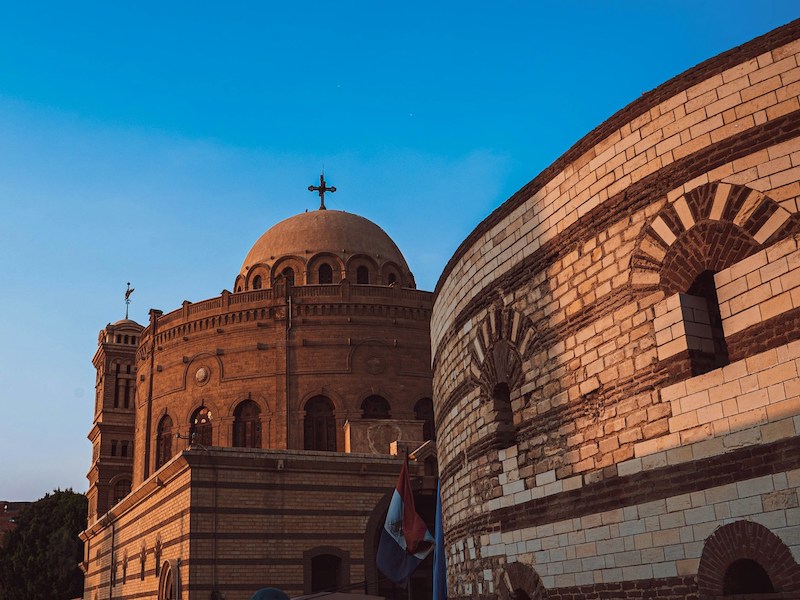
Old Cairo
Once known as the Roman stronghold of Babylon, Coptic Cairo is the oldest part of the city and the heart of the Coptic Christian community. Home to five original churches alongside…
Old Cairo
Once known as the Roman stronghold of Babylon, Coptic Cairo is the oldest part of the city and the heart of the Coptic Christian community. Home to five original churches alongside Egypt's first mosque and oldest synagogue, these ancient walls house three of the major religions of the modern world in one special area. This peaceful place offers respite from the busy city centre and is a joy to wander around.
Churches of interest are the Al-Muallaqa (Hanging Church), the oldest Christian place of worship in the city, and St Sergius, where the Holy Family reputedly sheltered during their flight to Egypt. Visitors can take the metro into Coptic Cairo from Tahrir Square. It's useful to have a guide when exploring the area as there's so much history to discover and so much to see. However, visitors who chose to explore alone will feel the power and age of the place and should still be able to find all the major attractions.
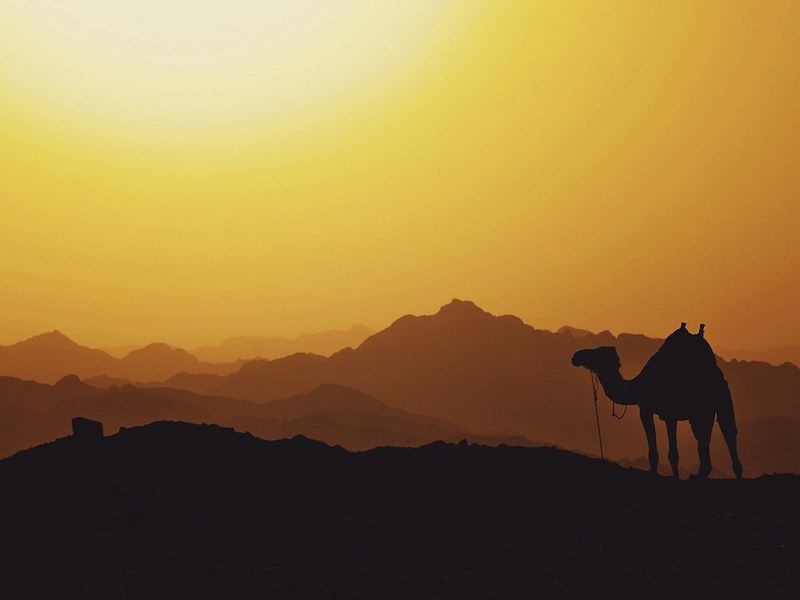
Western Desert Oases
From Cairo it's possible for adventurous travellers to enjoy Egypt's finest journey, the Great Desert Circuit. It runs for over 621 miles (1,000km) through spectacular desert lands…
Western Desert Oases
From Cairo it's possible for adventurous travellers to enjoy Egypt's finest journey, the Great Desert Circuit. It runs for over 621 miles (1,000km) through spectacular desert landscapes and is punctuated by four oases, Bahariya, Farafra, Dakhla and Kharga, which are situated in a depression. The first two have hot springs and palm groves, with Farafra being the more traditional and rural of them.
To experience the remoteness of the desert travellers can spend an unforgettable night in the White Desert between oases. Dakhla and Kharga are surrounded by old ruins and villages from the times of the ancient caravan routes to Sudan.
The Great Desert Circuit is a fascinating journey and really allows travellers to grasp the enormity of the Egyptian desert and appreciate the history of exploration in the region. The roads are in good condition, with hardly any traffic on them, and the whole circuit can be done in anything between 16 hours and a week. Some of the oasis towns are lovely places to spend a night before resuming a road trip.
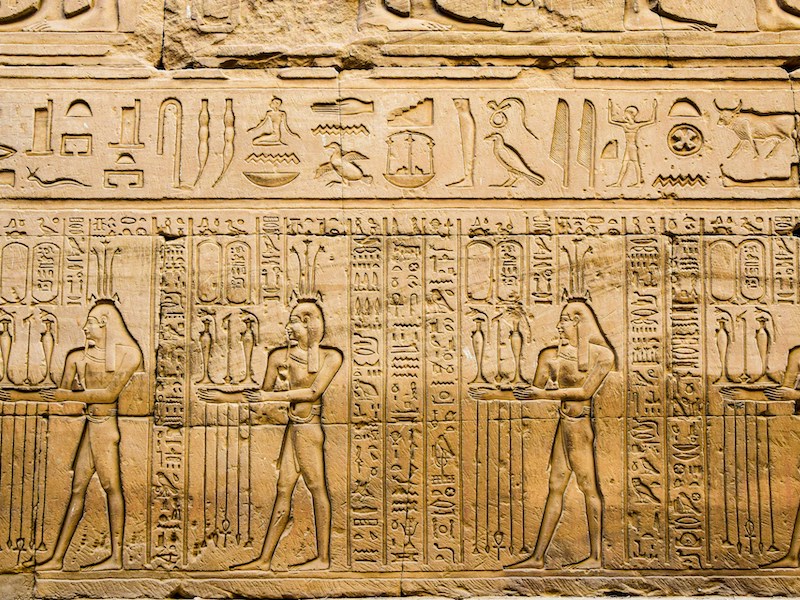
Temple of Karnak
The main place of worship in Theban times, and built over a period of 1,300 years, the massive Temple of Karnak in Luxor is an incredibly impressive structure. It was known as Ipet…
Temple of Karnak
The main place of worship in Theban times, and built over a period of 1,300 years, the massive Temple of Karnak in Luxor is an incredibly impressive structure. It was known as Ipet-isut, the most select of places, to the ancient Egyptians and it's one of the largest religious buildings ever erected. One of the world's great architectural achievements, the Hypostyle Hall, is filled with immense stone pillars still bearing the engraved and painted inscriptions from the 12th Dynasty, and covers an area of 64,583 square feet (6,000 sq metres). The complex also contains the Avenue of the Sphinxes, the Sacred Lake, and many huge statues, halls, ornate wall murals, obelisks and colonnades.
One of the lesser known attractions of this vast temple complex is the small Temple of Ptah, which is hidden on the northeastern boundary. It's very special because the room is intact (giving a realistic sense of what the dark temple interior would have felt like in ancient times) and a statue of Sekhmet remains in place, lit up by natural light. The Temple of Karnak can be a bit overwhelming without a guide, or at least a good guide book, so visitors should be sure to either hire someone or do their research to fully appreciate the wonders of the place.
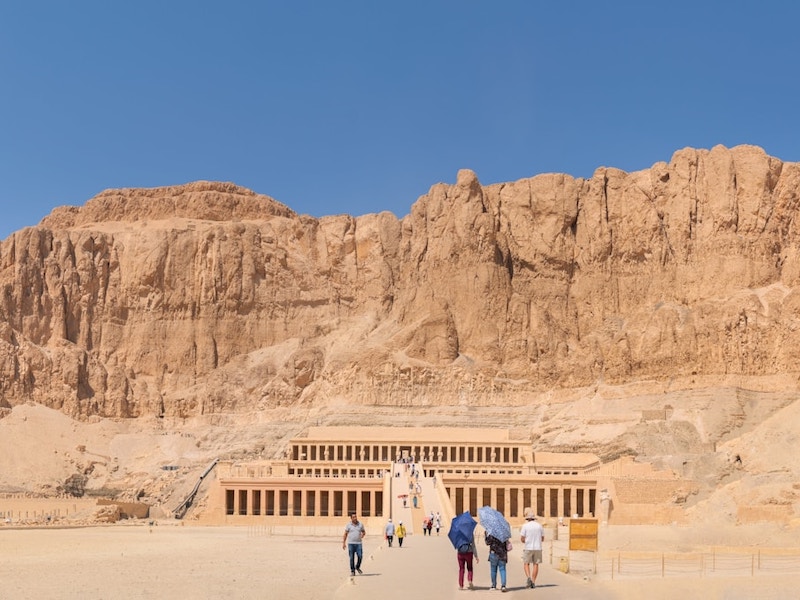
West Bank
The West Bank is an area of limestone hills and valleys riddled with tombs and temples across the river from Luxor. Goats roam freely among the ruins, and the tiny settlements on t…
West Bank
The West Bank is an area of limestone hills and valleys riddled with tombs and temples across the river from Luxor. Goats roam freely among the ruins, and the tiny settlements on the slopes provide a splash of colour in an otherwise desert-like barrenness. The 59 foot (18m) high pair of enthroned statues of the Colossi of Memnon are the first things most visitors will see on the West Bank. These are the only remaining structures of the mortuary temple of Amenophis III.
Most travellers come to visit the Valley of the Kings, where the secretive tombs of the Pharaohs were built to immortalise their mummies and treasures for eternity. In an attempt to thwart tomb robbers, traps and deceptions were part of the architectural planning.
Dramatic descents, spectacular murals on the passage and chamber walls and a replica of the original sarcophagus at the end of the tunnel create an awe-inspiring atmosphere. There are a number of areas and tombs to explore and highlights include the tombs of Tutankhamun and Ramses II.
However, the country's finest tomb, the Tomb of Nefertari, lies in the Valley of the Queens, which has exceptional painted murals. Nefertari's tomb is open to the public after a restoration project. Also worth a visit is Hatshepsut's Temple, the mortuary temple of Egypt's only female Pharaoh.
.jpg)
Abu Simbel
The two temples of Abu Simbel (the Temple of Ramses II and the Temple of Hathor (the Sun God), dedicated to his wife Nefertari) were cut out of the sandstone cliffs more than 3,000…
Abu Simbel
The two temples of Abu Simbel (the Temple of Ramses II and the Temple of Hathor (the Sun God), dedicated to his wife Nefertari) were cut out of the sandstone cliffs more than 3,000 years ago. Not only are these ancient temples among the most magnificent in the world, but their removal and reconstruction are recorded as an impressive engineering feat. The temples were relocated, very successfully, during the construction of the High Dam on Lake Nasser in the 1960s. The monuments were threatened with submersion, and after an appeal by UNESCO, in co-operation with the Egyptian Government, they were dismantled and reassembled exactly as before, about 197 feet (60m) higher up.
The intimidating sight that first greets the visitor at Abu Simbel is that of the four colossal statues guarding the entrance to the Grand Hall of the Temple of Ramses. The interior is highly decorated with relief paintings and is supported by eight statues of Ramses acting as giant pillars. Leading off the hall are painted sanctuaries and chambers. The Temple of Hathor is smaller and simpler, also with statues guarding the entrance and a manifestation of the Sun God portrayed above. It's aligned in such a way that the sun's rays reach inside to illuminate the statues of Amun-Re, Ramses II, and Re-Horakhty twice a year. The statue of Ptah, a god of the underworld, remains in shadow. The temples are considered to be the grandest and most spectacular monuments built during the reign of Ramses II.
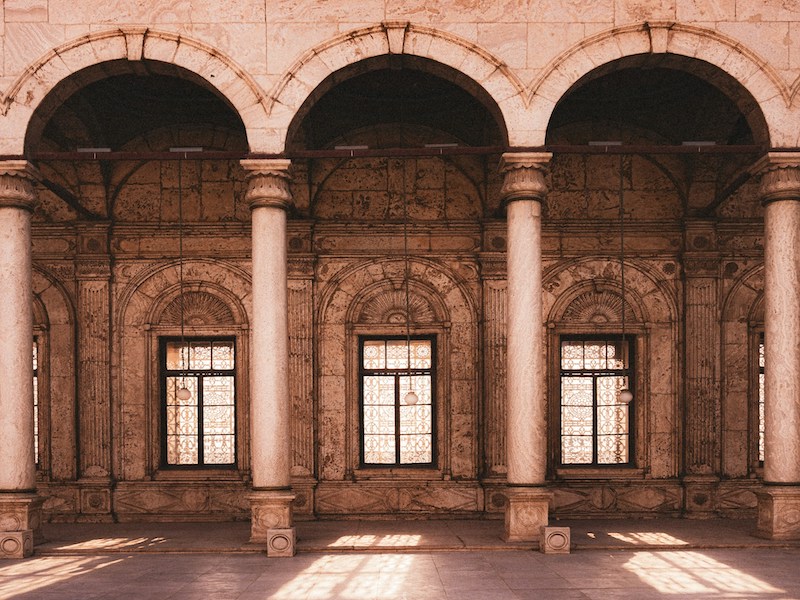
Saladin Citadel (Al-Qalaa)
The Saladin Citadel is a massive stone fortress set in a beautiful tropical location, and was built by Salah ad-Din in the 12th century. Visitors have the freedom to roam the castl…
Saladin Citadel (Al-Qalaa)
The Saladin Citadel is a massive stone fortress set in a beautiful tropical location, and was built by Salah ad-Din in the 12th century. Visitors have the freedom to roam the castle, which remains in pristine condition, and which boasts incredible views of Cairo. Those who are lucky enough to visit on a clear day will be able to see all the way to the pyramids.
The execution room is particularly interesting but just wandering around this ancient citadel is fascinating. The Mohammed Ali Mosque (also called the Alabaster Mosque) crowns the citadel and this magnificent place of worship is the highlight of the fortress. It was built between 1824 and 1857 and modelled on the famous Blue Mosque in Istanbul.
There are two other mosques within the Citadel: the 13th-century Mosque of al-Nasir Muhammad, and the 16th-century Mosque of Suleyman Pasha. As always, women visiting the mosques must wear loose clothing and be prepared to cover up (there are scarves available at the entrance for this purpose if visitors do not bring their own). The Al-Gawhara Palace, National Military Museum and Police Museum can also be found inside the Citadel.
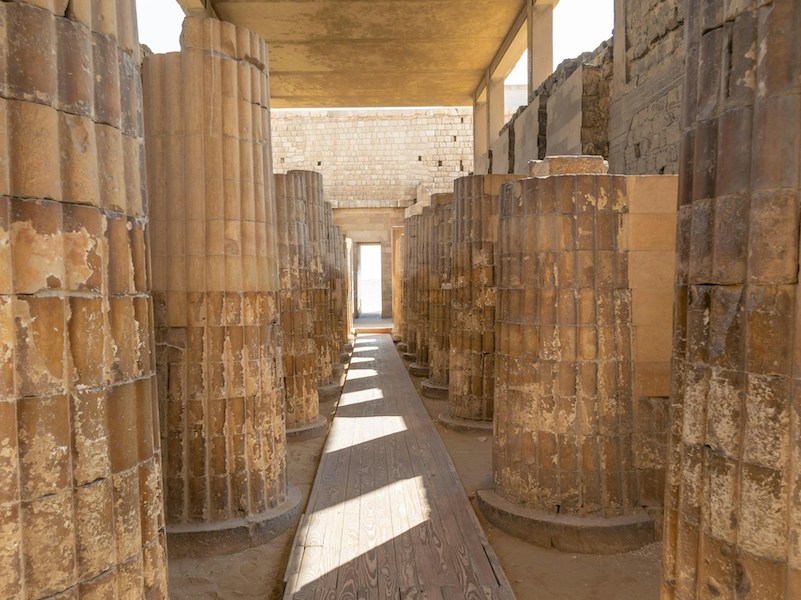
Memphis and Saqqara
Memphis and Saqqara are small towns today, but in ancient Egypt they were great cities and seats of power, a legacy still traceable in the ruins and relics in each. Memphis is home…
Memphis and Saqqara
Memphis and Saqqara are small towns today, but in ancient Egypt they were great cities and seats of power, a legacy still traceable in the ruins and relics in each. Memphis is home to the Temple of Ptah, which includes the Colossus of Ramses II, a 33-foot (10m) statue near the entrance, and a small museum. Memphis was once the capital of Egypt and visitors can still tell how impressive it once was.
Less than two miles (3km) away is the plateau of Saqqara. Here visitors will find the vast Saqqara Necropolis, which contains many cemeteries, pyramids, mastabas and private tombs, including the Mastaba of Ti, the Pyramid of Teti I, and the Unas Causeway and Pyramid of Unas. One of the most famous structures in Saqqara is the Step Pyramid of Djoser, which is also known as the Step Tomb due to its rectangular base. Travellers will find the Imhotep Museum in Saqqara as well.
Memphis and Saqqara together make a popular excursion from Cairo. There isn't much in the way of entertainment, dining or accommodation at these sites, however, so most visitors don't overnight.
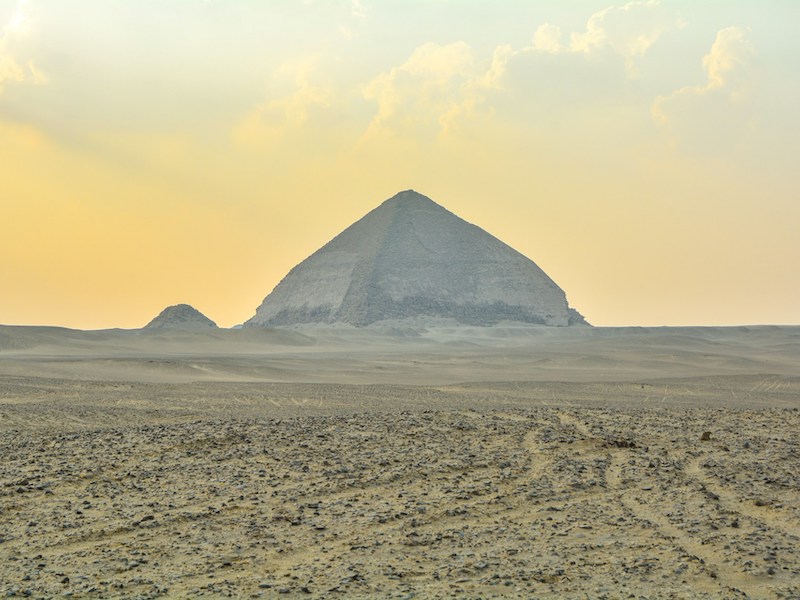
Dahshur
One of the most worthwhile things to see and do in the Cairo area is take an excursion to Dahshur, a royal necropolis in the desert where the oldest true pyramid, the Red Pyramid, …
Dahshur
One of the most worthwhile things to see and do in the Cairo area is take an excursion to Dahshur, a royal necropolis in the desert where the oldest true pyramid, the Red Pyramid, can be found. Some of the burial sites and pyramids date back to the Old Kingdom of the 4th dynasty and the Red Pyramid and the Bent Pyramid were built by Sneferu (founding pharaoh of the Fourth Dynasty of Egypt) in about 2600 BC.
The Bent Pyramid is so-called because the angle of its sides isn't quite straight, which is probably the result of an ancient engineering mistake. The Red Pyramid is made out of red limestone and was built after the Bent Pyramid. It's thought to have been the first true, straight-sided pyramid in Egypt. The famous Pyramids of Giza were modelled on this design.
Visitors can usually climb into the Red Pyramid and descend down a tunnelled ramp into its three interior chambers, which is a rare privilege. There are other tombs of interest scattered around the area and visitors can't walk far without stumbling on some wondrous ancient ruin.
Dahshur is about 20 miles (32km) from Cairo and makes for a fascinating excursion from the city. The drive takes under an hour and follows a scenic route that passes through date orchards. Dahshur is far less crowded than most other big tourist attractions and visitors experience far less of the hassle from locals and touts that they do at Giza. At this site travellers can still get the thrill of an explorer discovering something mysterious and ancient.
However, the empty nature of this famous archaeological site is partly due to occasional sectarian violence in the nearby town of Dahshur, so travellers are advised to check out travel alerts to gauge how safe it is before they visit.


